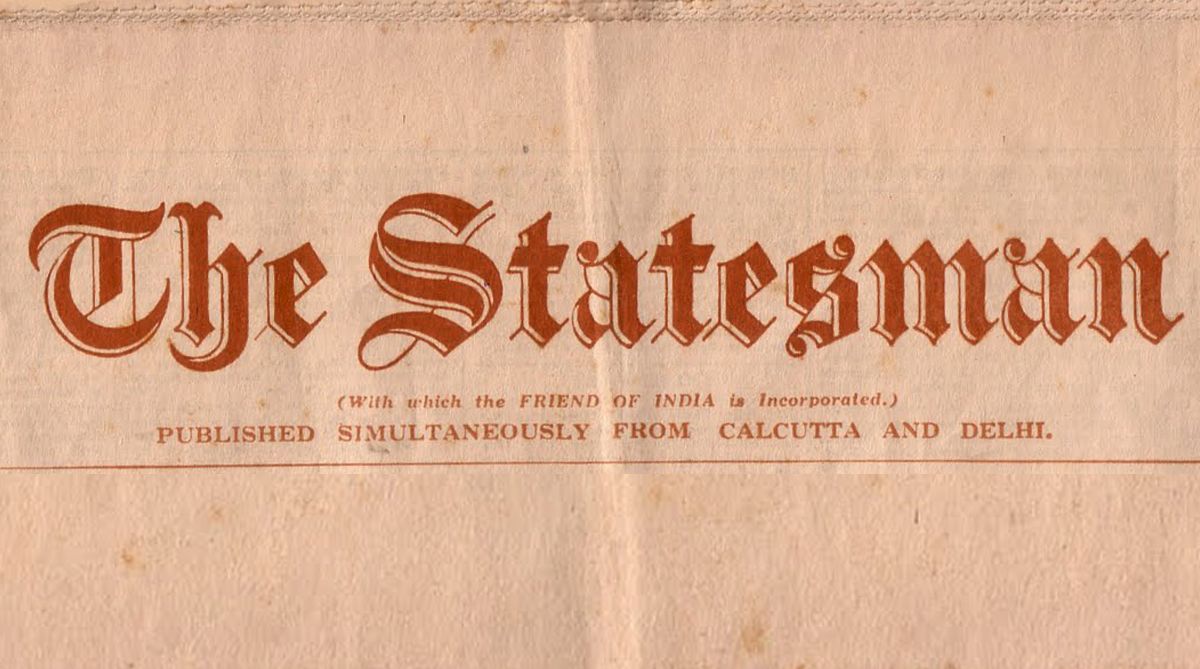A New Day, A New Dawn
There is a surprise for the readers. A special Poila Boishakh gift from none other than West Bengal chief minister Mamata Banerjee. Who has written a piece for this special edition.
On this day a century ago, these were some of the news items The Statesman readers got to read about India and the world.

OCCASIONAL NOTE
Is the modern generalissimo better informed as to the movements of his opponent than his analogue of a century ago? At first sight the aeroplane may appear to have settled this question in the affirmative, but the experience gained during the late German offensives, when the enemy sprang surprise after surprise upon the Allies in spite of the unquestionable superiority of their air service, throws doubt upon this proposition.
As an adjunct to accurate artillery practice aerial observation is invaluable, but so far as scouting is concerned, atmospheric “visibility” is so uncertain and the protective device known as camouflage has been developed to such an extent that it has become difficult, if not impossible, to rely upon aerial observation alone.
Advertisement
In this respect the air scout is greatly inferior to the old-fashioned cavalry patrol, which, though its range was much more limited than that of the airman, was able to bring back approximately accurate reports from the country over which it had operated.
The surprise concentrations which the Germans were able to effect under the noses of our numerous aircraft are evidence of the limitations of aerial reconnaissance, and furnish a justification for the greater attention which is now being paid to low-flying attacks upon infantry, and bombing raids upon aerodromes, ammunition dumps, factories, and other places d’armes.
RECRUITING IN THE PUNJAB
Reports from the Punjab districts show that recruiting generally is proceeding most satisfactorily. This is especially so in Ferozepore, where the results for August bid fair to break all records. The stamp of recruits coming in is said to be extremely good, and the spirit among them all that could be desired.
A large number of the men are brought in and enlisted in the name of their mother, father and brothers, and there have been very numerous instances of several enlistments in the same family. Great credit is due to the Deputy Commissioner and his assistants for the success of their organisation.
Another instance of the spirit of cheerful patriotism is the resolution recently passed by the Rohtak recruiting board that the district should provide during the current twelve months one thousand recruits over the assigned quota.
WOMEN TRAMWAY AND OMNIBUS WORKERS
The Press Bureau announces that the Committee on Production has awarded women, tramway and omnibus workers and advance over pre-war rates, thus equalising their rates with those of male workers. The Government has appointed a committee to investigate and report on the relations between the wages of women and men generally.
PACIFIC ISLANDS
The Australian Premier, Mr. Hughes, speaking at the Pilgrims’ Club, said that Australia dare not assent to the Pacific islands reverting to Germany, because Australia’s safety demanded that her sea pathways should be free, and whoever held the northern islands belts commanded Australia.
Germany fortified the islands and monopolised their trade before the war and a few more years would have seen a huge German army in the Pacific. New Guinea and the other islands were to Australia what Boulogne and Calais were to England. Australians had laid down their lives to develop Australia’s heritage in the Pacific.
There were going to be many international complications and racial problems, and a war greater than the present might follow unless people with a love of freedom and ample regard for civilisation, such as the Germans did not possess, immediately administered the Pacific.
CAPTURE OF GINCHY
Reuter’s correspondent at British headquarters, wiring this morning, says: We are reported to have captured Ginchy, an important high point north-ward of the Somme. The enemy are fighting spirited rearguard actions in places, but it seems clear that their great desire is to get back to a settled line.
They are retreating as rapidly as possible, and are burning or blowing up such supplies as are too heavy to be hastily removed. We are still within two thousand yards of the Drocourt-Queant line, but have cleared the tortuous intermediate zone of machine-gun nests, and have established an excellent defensive flank northward of the Scarpe.
A feature of the battle is the exceptionally large number of enemy scouting aeroplanes, which are fighting in big formations. Twenty-two Fokkers were counted in one flight, and several others have been seen of between fifteen and twenty machines.
Advertisement